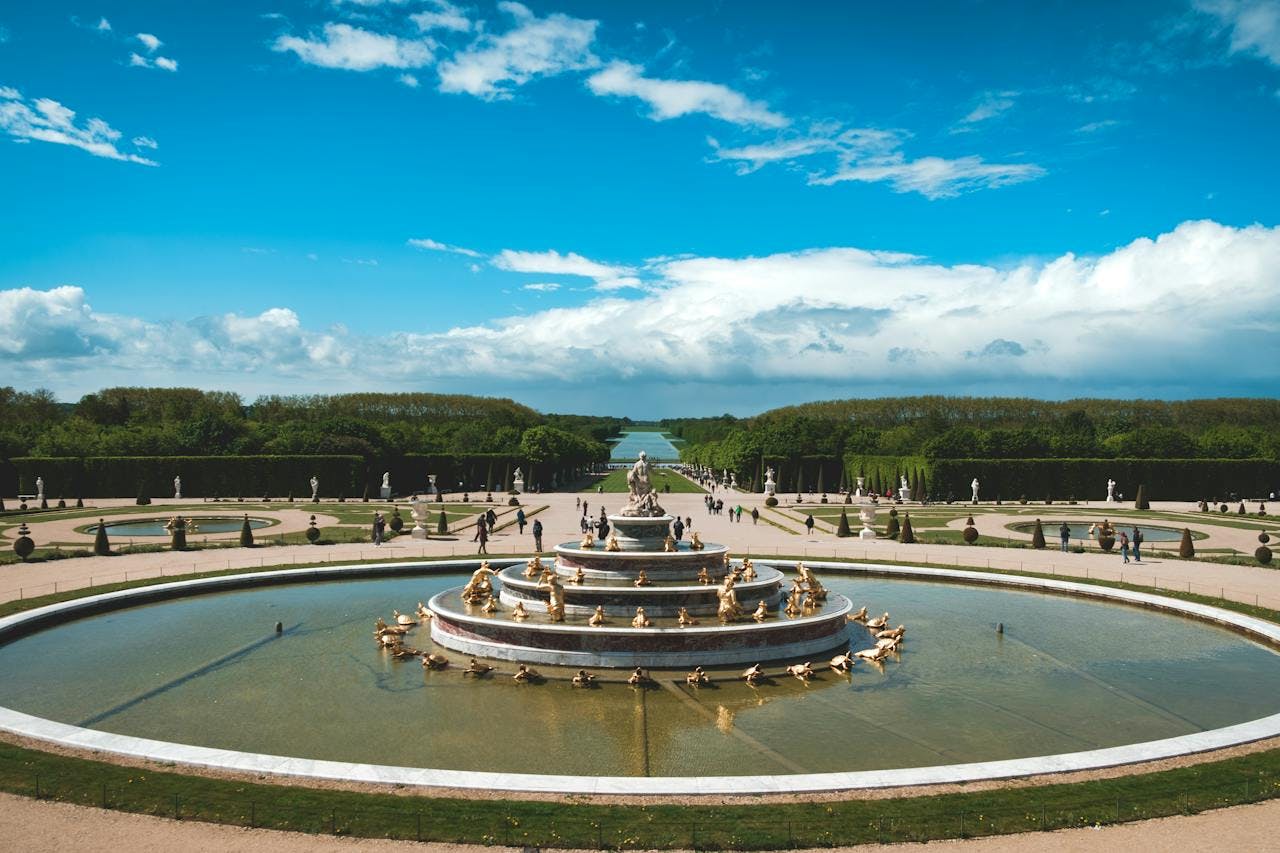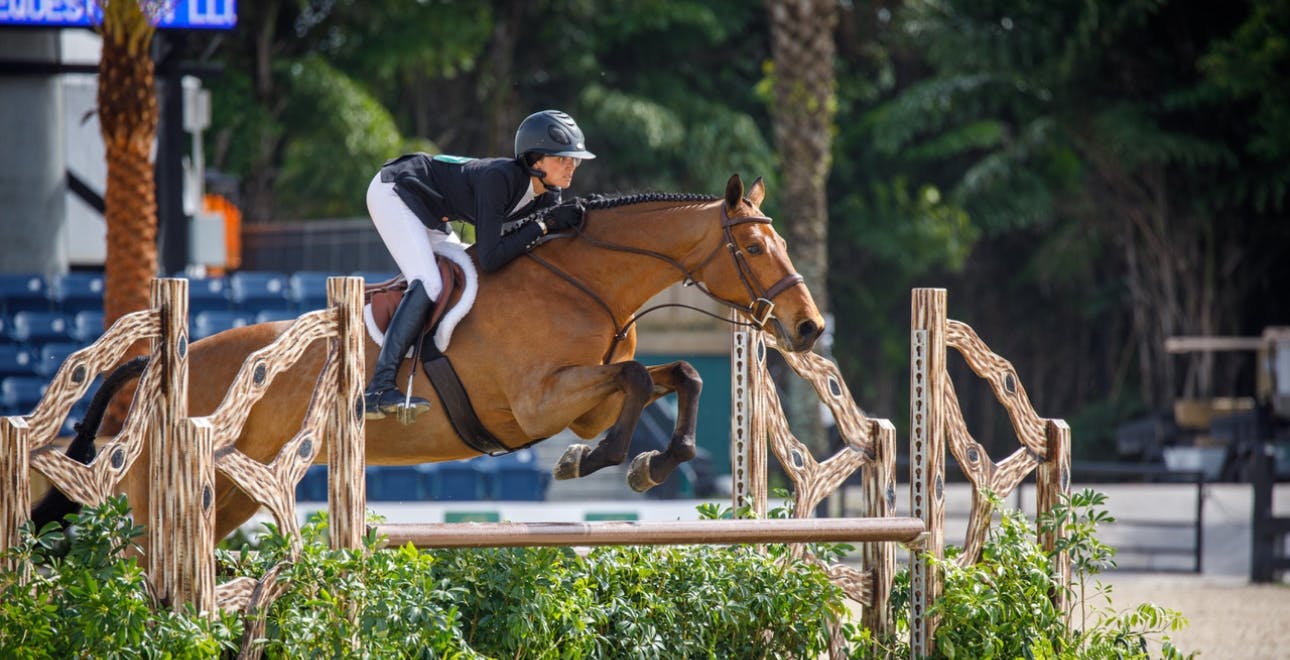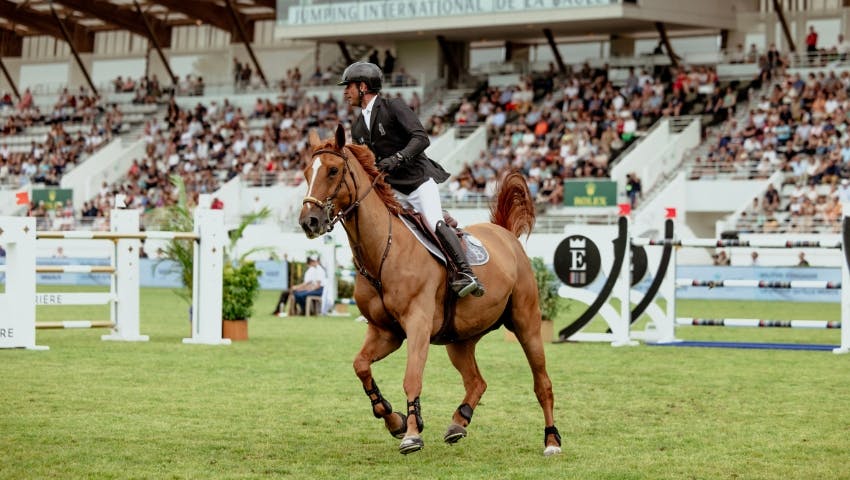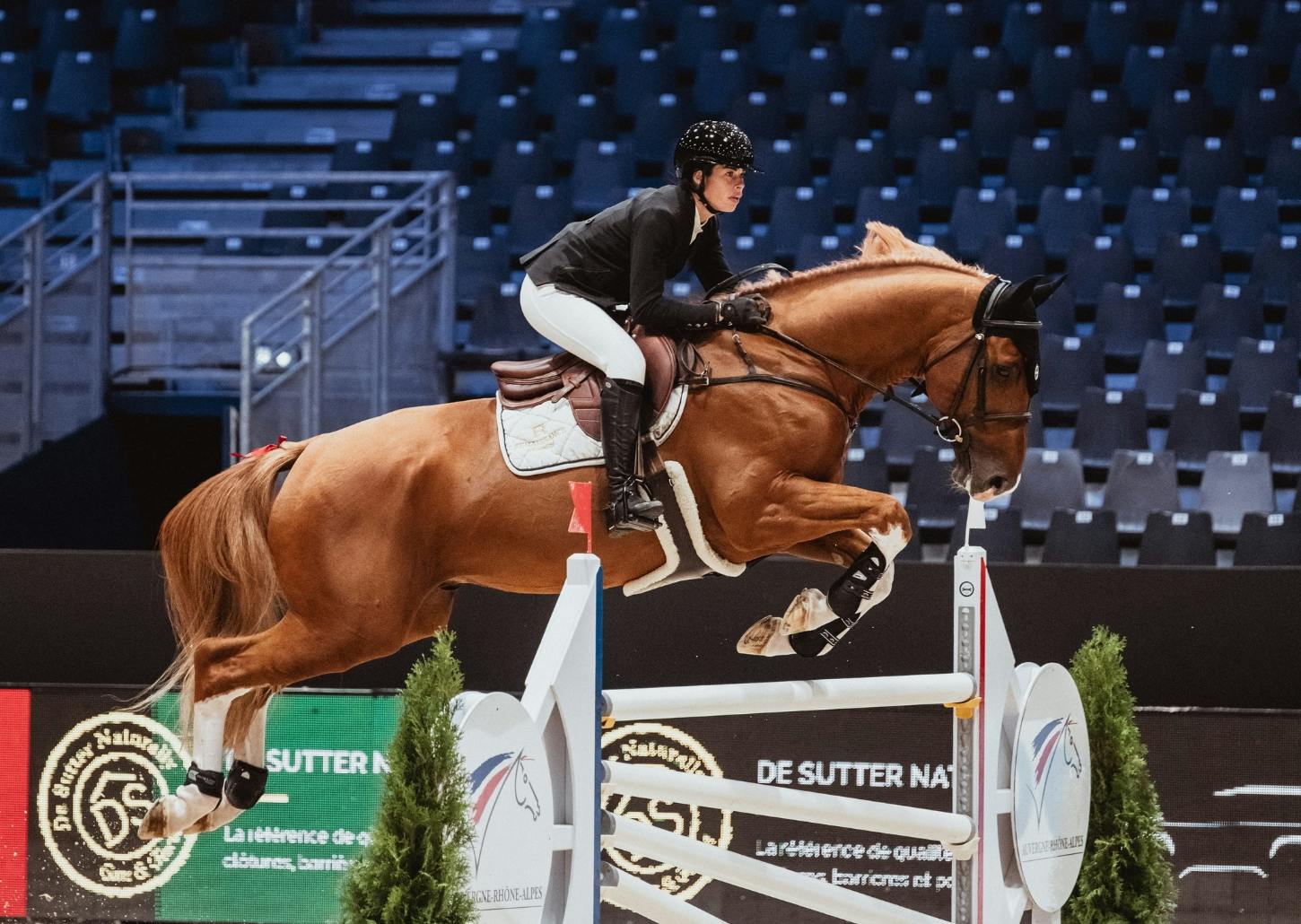Events and qualifications for show jumping at the Paris 2024 Games

Events and qualifications for show jumping at the 2024 Olympic disciplines
When the Games founded by Baron Pierre de Coubertin open in Paris in July 2024, the eyes of the world will be on a competition that transcends sport: the show jumping events. Known as show jumping (CSO), they are one of the highlights of equestrian competition, combining power, precision and grace in a spectacular dance between rider and mount. This Olympic discipline, which has evolved over time, is a true test of skill, courage and connection between rider and horse. And to showcase these prodigious couples, the sumptuous setting of the Château de Versailles was chosen. With just a few months to go before the opening of this global sporting celebration, let's take a look at this eagerly-awaited Olympic discipline.

The history of equestrian events
The beginnings of equestrian events at the Games
Equestrian events first appeared in Ancient Greece. Back then, man and horse were already closely linked. Together on the battlefield, their chances of survival depended largely on their complicity. The very impressive and dangerous chariot race reflected this warrior equitation.
Show jumping made its debut in Paris in 1900. At the time, three events were represented: show jumping, long jump and high jump. Moreover, only military officers were allowed to take part, reflecting the historical importance of the horse in military tradition.
The evolution of equestrian events over time
Over the years, equestrian events have evolved into what we know today. The long jump and high jump were not repeated after the 1900 Olympics. Equestrian events also gradually broke away from the military and masculine tradition, to appeal to a wider public.
The year 1952 marked a major turning point for equestrian events. Women and civilians were now allowed to take part in dressage events during the Games. It was only in 1956 that women were allowed to compete in show jumping, and in 1964 in eventing. Today, it is the only fully mixed sport.
Since then, equestrian sport at the Olympics has grown exponentially, with riders of all ages and backgrounds vying for Olympic glory. Show jumping, in particular, has become an exciting spectacle, with increasingly complex courses and ever more talented horses and riders.
Milestones in the history of equestrian events
The history of equestrian events at the Games is littered with unforgettable moments. Among them, the triumph of German rider Liselott Linsenhoff in 1972 with the stallion Piaff. She became the first woman to win an individual dressage gold medal. Her success marked a turning point for women in the sport and paved the way for many other talented riders.
More recently, Britain's Nick Skelton, considered one of the world's finest riders, won show jumping gold at the age of 58 at the Rio 2016 games, with stallion Big Star. His victory, after an impressive career that was also marked by a serious accident at a competition in 2000, was a real lesson in perseverance and determination.
Last but not least, the French show jumping team's victory at the 2016 Rio Games will remain engraved in our collective memory. This gold medal was all the more moving because it was won after a series of unfortunate events. Between Simon Delestre's withdrawal due to an injury to his horse, a bout of colic for Pénélope Leprévost's mare and a fall for the rider, nothing could have foreshadowed this victory. The team spirit and mental strength of these top athletes, both human and equine, enabled France to climb to the top of the rankings.

The different show jumping events at the Games
The show jumping course: description and rules
Show jumping is an event that tests the speed, agility and precision of both rider and mount. The course consists of :
12 to 14 obstacles as a team, with a maximum of 17 efforts in qualifications
12 to 14 team obstacles with a maximum of 18 efforts in the final
12 to 14 individual obstacles with a maximum of 17 efforts in qualifications
12 to 15 individual obstacles with a maximum of 19 efforts in the final.
Obstacles may vary in height from 1.40 meters to 1.65 meters, with spacing proportional to height, but not exceeding 2 meters for a double and 2.20 meters for a triple. The course must be completed in a set order and within a set time.
Individual qualifications are open to 75 rider-horse pairs, with a maximum of 3 pairs per nation. Only the 30 highest-ranked pairs can reach the final. Team qualifications are open to 20 teams of 3 pairs each. The 10 highest-ranked teams then advance to the final.
In the event of withdrawal for medical or veterinary reasons, a substitution of one rider-horse pair per team is authorized. The substitution must take place between the end of the team qualifications and up to two hours before the start of the final.
Judging and scoring criteria for show jumping
Riders are judged on their ability to complete the course without fault and within the allotted time. Riders are penalized for overturning a bar, refusing to jump an obstacle, or exceeding the allotted time. Each fault adds penalties to the rider's total score, and the rider with the lowest score at the end of the event is declared the winner.
In case of doubt about the jump over the river, the judge may ask to review the video sequence filmed by the official camera to determine whether or not a fault has been committed.
In the individual and team finals, scores are reset to zero and the running order is determined by the ranking from the previous round. In the event of a tie, a jump-off is organized, with riders competing over a shortened course as quickly as possible. The ranking after the jump-off determines the top 3 places on the podium.
Emblematic show jumping champions at the games
French rider Pierre Durand and his mount Jappeloup are among the show jumping's most emblematic champions. The pair won gold in Seoul in 1988 after a memorable performance in which they overcame a difficult course without committing a single fault. This victory was all the more remarkable given that Jappeloup, a small French saddle with a strong character, was far from the favorite after his elimination at the Los Angeles Games four years earlier.
Swiss rider Steve Guerdat, Olympic champion in London 2012, also made show jumping history. Riding Nino des Buissonnets, a talented little horse with a lot of blood, Guerdat showed exceptional mastery to win gold.
The qualification process for show jumping at the Games
Quotas and qualification criteria for national teams
To qualify for the Paris 2024 Games in Versailles, national teams must take part in very specific competitions that take place between August 2022 and the end of the 2023 season. Quotas are awarded on the basis of the team's performance in these competitions. France, the host country, has been allocated 3 individual quota places. The remaining 19 quotas are allocated as follows:
5 quotas for the 5 highest-ranked teams at the 2022 FEI Show Jumping World Championships.
1 quota to the highest-ranked team at the FEI Nations Cup 2022.
3 quotas to the three highest-ranked teams in FEI Olympic Groups A (North-West Europe) and/or B (South-West Europe) at the 2023 FEI European Show Jumping Championships.
2 quotas for the two highest-ranked teams in Group C (Eastern and Central Europe/Central Asia) of the 2023 FEI Olympic Qualification.
3 quotas to the three highest-ranked teams in groups D (North America) and/or E (Central and South America) at the 2023 Pan-American Games.
2 quotas to the two highest-ranked teams in group F (Africa and Middle East) of the 2023 FEI Olympic Qualification.
2 quotas to the two highest-ranked teams in the FEI 2023 Olympic Qualification Group G event (Southeast Asia/Oceania).
1 quota to the highest-ranked team in the FEI Nations Cup Jumping 2023.

Individual qualifications for riders
The final 15 places for the individual show jumping events at Paris 2024 will be allocated to riders based on their ranking and individual performance. These places will be determined by a specific qualification process for individual riders, who are not part of a national team. Each National Olympic Committee (NOC) may qualify a single individual rider, but only NOCs that have not already qualified a show jumping team are eligible for these additional individual places.
Qualifying competitions and results required to take part in the Paris Games 2O24
Qualifying competitions for show jumping at the Paris 2024 Olympic Games include the FEI Show Jumping World Championships 2022, the FEI Show Jumping Nations Cup 2022, the FEI Show Jumping European Championships 2023, the Pan-American Games 2023 and the FEI Show Jumping Nations Cup 2023. Riders and teams must place among the best in these competitions to earn their place at the Games.

The challenges and expectations for athletes in the show jumping events at the Paris 2024 Games.
The pressure and mental preparation of Olympic riders
The pressure of this international sporting competition in Paris in July 2024 is immense, and riders need to be mentally prepared to handle it as well as possible. Many riders work with a mental coach to help them manage stress and stay focused during the competition. They use techniques such as visualization, meditation and cardiac coherence to stay calm during events and avoid transmitting negative emotions to their mounts.
The technical and physical challenges of show jumping
Show jumping at the Olympic Games is a demanding discipline, requiring excellent physical condition and impeccable technique. Riders must be in perfect harmony with their mount to clear obstacles with precision. They must also be able to make quick decisions under pressure. A single mistake can mean the difference between a medal and defeat.
Medal chances and favourites for future sporting events
With the race to qualify for the Paris 2024 Games in full swing, all eyes are on the favorites for the show jumping events. These include Swiss rider Steve Guerdat, gold medallist at the 2023 European Championships in Milan with his mare Dynamix de Bélhème, and British rider Ben Maher, winner of the 2020 Tokyo Olympics with his horse Explosion.
Sweden may have won the last Olympic Games in Tokyo in the team event, but France still has high hopes of a medal in Paris. Who knows, maybe they'll repeat the Rio de Janeiro scenario? The French riders are preparing assiduously to achieve this.
The importance of show jumping at the Olympic Games
Show jumping at the Olympics is a spectacle not to be missed. They represent the pinnacle of show jumping, where the world's best riders battle for Olympic glory. With qualification for the Paris 2024 Games underway, we look forward to seeing who will jump to glory in Paris. With so much talent and determination in the running, the show jumping events promise to be an exciting and unforgettable spectacle.